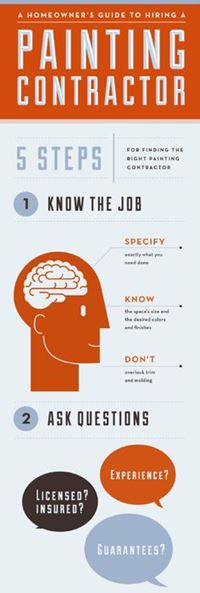Seasonal Factors To Consider For Industrial Outside Painting: What You Required To Know
Seasonal Factors To Consider For Industrial Outside Painting: What You Required To Know
Blog Article
Post By-Burnham Rodriquez
When you're intending a commercial exterior painting task, seasonal factors can make or break your results. You'll intend to take into consideration exactly how temperature and moisture effect paint application and drying times. Selecting the ideal season can ensure your paint sticks appropriately and lasts longer. But which seasons are really the best for this kind of job? Let' great site out the crucial elements that can influence your project's success.
The Impact of Temperature on Paint Application
When you're intending an industrial exterior painting project, the temperature level can considerably impact how well the paint sticks and dries.
Ideally, paint expiry date wish to paint when temperatures range in between 50 ° F and 85 ° F. If it's as well cold, the paint may not cure correctly, resulting in issues like peeling off or splitting.
On the other hand, if it's as well warm, the paint can dry out also rapidly, protecting against correct attachment and resulting in an uneven surface.
You need to likewise take into consideration the moment of day; early morning or late afternoon offers cooler temperature levels, which can be extra positive.
Constantly check the supplier's recommendations for the specific paint you're using, as they frequently offer support on the ideal temperature variety for optimum outcomes.
Humidity and Its Impact on Drying Times
Temperature level isn't the only environmental variable that influences your industrial external painting project; humidity plays a significant function also. High moisture degrees can reduce drying out times drastically, impacting the overall quality of your paint work.
When the air is saturated with dampness, the paint takes longer to treat, which can result in issues like poor adhesion and a higher risk of mildew growth. If you're repainting on a particularly humid day, be planned for extended wait times between layers.
It's critical to monitor neighborhood climate condition and strategy as necessary. Preferably, go for humidity degrees between 40% and 70% for ideal drying out.
Keeping these factors in mind ensures your project stays on track and provides a long-term surface.
Best Seasons for Commercial Exterior Paint Projects
What's the very best season for your commercial outside paint jobs?
Springtime and very early fall are generally your best choices. Throughout https://landenyiraj.jts-blog.com/33309759/discovering-the-perfect-residence-painters-revealing-the-fundamentals-for-a-beautiful-home-improvement , temperatures are mild, and humidity levels are typically lower, creating optimal conditions for paint application and drying.
Stay clear of summertime's intense heat, which can create paint to dry too rapidly, bring about bad attachment and surface. In a similar way, winter's chilly temperatures can hinder appropriate drying out and treating, risking the durability of your paint work.
Go for days with temperatures in between 50 ° F and 85 ° F for optimal results. Bear in mind to check the local weather report for rainfall, as damp problems can ruin your job.
Preparation around these elements guarantees your paint project runs smoothly and lasts longer.
Verdict
To conclude, planning your industrial outside paint projects around seasonal factors to consider can make a substantial distinction in the end result. By scheduling work during the optimal temperatures and humidity degrees, you'll guarantee much better adhesion and drying out times. Keep in mind to watch on regional weather report and select the correct time of year-- springtime and very early fall are your best options. Taking these steps will help you achieve a resilient and professional surface that lasts.
